#alan splet
Explore tagged Tumblr posts
Text
David Lynch and Alan Spelt - Eraserhead Soundtrack
480 notes
·
View notes
Text







On March 19th, 1977, David Lynch’s most spiritual (and held secret) film, Eraserhead, made its debut in the midnight cinema circuit. David himself did not have faith that it would gain attention, but cinephiles immediately started talking about it, and John Waters created a buzz when he told fans of his own movies to go see it.
Eraserhead is now considered one of the most quintessential cult classics, is studied in film schools, and still has a strong reputation among those looking to delve further into the underground of film.
Nearly every person involved in the making of Eraserhead became one of David Lynch’s close friends and frequent collaborators, helping him with almost all of his future endeavors- Catherine Caulson, Jack Nance, Jack Fisk, Charolette Stewart, Alan Splet, Frederick Elmes, to name a few.
David Lynch made it explicitly clear throughout his entire career in interviews that making Eraserhead was the best time he had, and even when he was so broke that he had to live on the set, he thoroughly enjoyed it. In my head, he is now back on set, creating art with his friends he so dearly missed.
#david lynch#in heaven everything is fine#as soon as i heard he passed i put on eraserhead and cried#eraserhead#cult classic#cult film#cult movies#jack nance#catherine caulson#jack fisk#alan splet#charlotte stewart#twin peaks#lynchian#dark and moody#dark aesthetic#david keith lynch#eraserhead baby#industrial#abstract#surreal movies
53 notes
·
View notes
Video
youtube
Eraserhead (David Lynch, 1977) - Lady In The Radiator (In Heaven)
12 notes
·
View notes
Text
1 note
·
View note
Text

#if i had a nickel for every time an alternative hip hop song sampled in heaven (lady in the radiator song) by david lynch & alan r. splet#i would have 2 nickels which isnt a lot but its cool that it happened twice (this + interlude by korban baxter & rodi on bandcamp)#mp#audio
1 note
·
View note
Text
btw you can cop the album for the score to Eraserhead here. Lynch composed it himself in collaboration with Alan R Splet. If you’ve seen Eraserhead there’s a possibility you’re thinking ‘…soundtrack? You mean In Heaven?’ but it’s more than that, well worth a listen. Lynch’s attention to music and sound over his career was fascinating and definitely unique
4 notes
·
View notes
Text

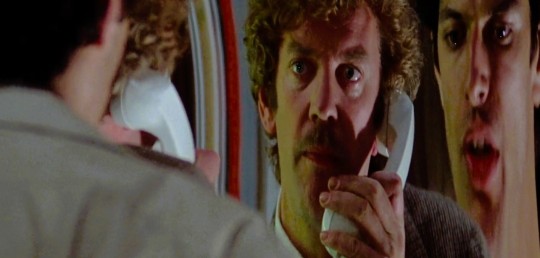
INVASION of the BODY SNATCHERS (1978) written by W.D. Richter (from the novel by Jack Finney) produced by Robert Solo directed by Philip Kaufman starring Donald Sutherland Brooke Adams Leonard Nimoy Jeff Goldblum Veronica Cartwright Art Hindle cinematography by Michael Chapman edited by Douglas Stewart music by Danny Zeitlin

JAWS (1975) written by Carl Gottlieb (from the novel by Peter Benchley) produced by Richard D. Zanuck and David Brown directed by Steven Spielberg starring Roy Scheider Robert Shaw Richard Dreyfus Lorraine Gary Murray Hamilton Carl Gottlieb cinematography by Bill Butler edited by Verna Fields music by John Williams

E r a s e r h e a d (1977) written, directed and produced by David Lynch starring Jack Nance Charlotte Stewart Allen Joseph Jeanne Bates Judith Roberts Laurel Near Jack Fisk cinematography by Frederick Elmes Herbert Caldwell edited by David Lynch sound design by Lynch w/ Alan Splet special effects by Lynch w/ Frederick Elmes
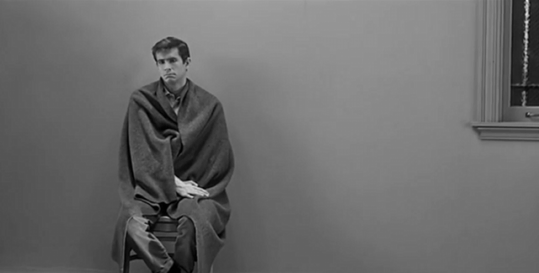
P s y c h o (1960) written by Joseph Stefano (from the novel by Robert Bloch) directed and produced by Alfred Hitchcock starring Anthony Perkins Vera Miles John Gavin Janet Leigh Martin Balsam Simon Oakland cinematography by John L. Russell edited by George Tomasini music by Bernard Hermann

A L I E N (1979) written by Dan O'Bannon (story by Dan O'Bannon and Ronald Sushett) directed by Ridley Scott produced by Gordon Carroll David Giler Walter Hill starring Tom Skerritt Sigourney Weaver Veronica Cartwright John Hurt Harry Dean Stanton Yaphet Kotto Ian Holm cinematography by Derek Vanlint edited by Terry Rawlings music by Jerry Goldsmith

John Carpenter's The THING (1982) written by Bill Lancaster (from the novella "Who Goes There?" by John W. Campbell) directed by John Carpenter produced by David Foster Lawrence Turman Wilbur Stark starring Kurt Russell A. Wilford Briley T.K. Carter David Clennon Keith David Richard Dysart Charles Hallahan Peter Maloney Richard Masur Donald Moffat Joel Polis Thomas Waites cinematography by Dean Cundey edited by Todd Ramsay music by Ennio Morricone
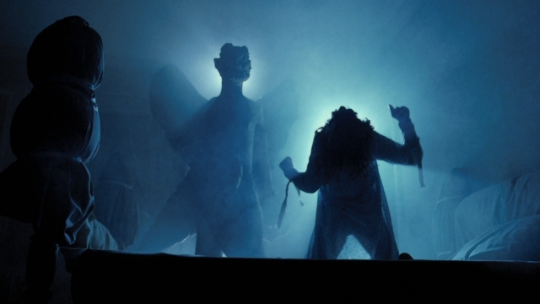
The Exorcist (1973) written by William Peter Blatty (from his novel) directed by William Friedkin produced by William Peter Blatty Noel Marshall David Salven starring Ellen Burstyn Max Von Sydow Jason Miller Lee J. Cobb Jack MacGowran Kitty Winn Mercedes McCambridge Linda Blair cinematography by Owen Roizman edited by Norman Gay Evan Lottman music by Jack Nitzche "Tubular Bells" by Mike Oldfield

R e p u l s i o n (1965) written by Roman Polanski Garard Brach screenplay adaptation by David Stone directed by Roman Polanski produced by Gene Gutowski starring Catherine Deneuve Ian Hendry John Fraser Peter Wymark Yvonne Furneaux cinematography by Gilbert Taylor edited by Alastair McIntyre music by Chico Hamilton
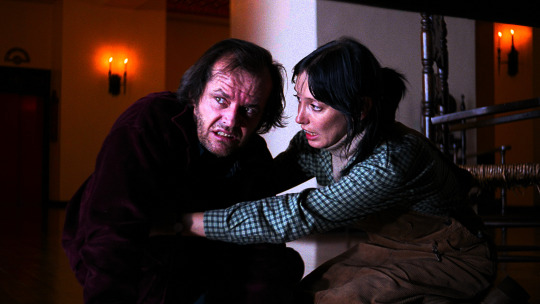
THE SHINING (1980) written by Diane Johnson Stanley Kubrick (from the novel by Stephen King) directed by Stanley Kubrick produced by Stanley Kubrick w/ Jan Harlan starring Jack Nicholson Shelley Duvall Danny Lloyd Scatman Crothers Barry Nelson Philip Stone Joe Turkel cinematography by John Alcott edited by Ray Lovejoy music by Wendy Carlos Rachel Elkind

Night of the Living Dead (1968) written by John Russo George A. Romero directed by George A. Romero produced by Karl Hardman Russell Streiner starring Duane Jones Judith O'Dea Karl Hardman Marilyn Eastman Keith Wayne Kyra Schon Judith Ridley cinematography by George A. Romero (uncr.) edited by George A. Romero (uncr.) Hugh Daly

Bram Stoker's Dracula (1992) written by James V. Hart (from the novel by Bram Stoker) directed by Francis Ford Coppola produced by Francis Ford Coppola Charles Mulvehill Fred Fuchs Michael Apted Robert O'Conner starring Gary Oldman Winona Ryder Anthony Hopkins Keanu Reeves Cary Elwes Richard E. Grant Billy Campbell Sadie Frost Monica Belluci Tom Waits cinematography by Michael Ballhaus edited by Anne Goursaud Glen Scantlebury Nicholas C. Smith music by Wojciech Kilar

TWIN PEAKS fire walk with me (1992) written by David Lynch Robert Engels (from the television series created by David Lynch and Mark Frost) directed by David Lynch produced by David Lynch Mark Frost Gregg Fienberg Johanna Ray John Wentworth starring Sheryl Lee Ray Wise Moira Kelly Grace Zabriskie Chris Isaak Kiefer Sutherland David Lynch Miguel Ferrer Harry Dean Stanton David Bowie Michael J. Anderson Frank Silva Al Strobel Jurgen Prochnow Dana Ashbrook James Marshall Frances Bay Catherine E. Coulson Kimberly Ann Cole Walter Olkewicz Lenny Von Dohlen Madchen Amick Peggy Lipton Julee Cruise Kyle Machlachlan cinematography by Ron Garcia edited by Mary Sweeney music by Angelo Badalamenti

Let the Right One In (2008) written by John Ajvide Lyndqvist (from his novel) directed by Tomas Alfredson produced by Frida Asp starring Kare Hedbrant Lina Leandersson Per Ragnar Henrik Dahl Ika Nord cinematography by Hoyte Van Hoytema edited by Tomas Alfredson Dino Jonsater music by Johan Soderqvist

W A R of the W O R L D S (2005) written by Josh Friedman David Koepp directed by Steven Spielberg produced by Kathleen Kennedy Damian Collier Paula Wagner Colin Wilson starring Tom Cruise Tim Robbins Dakota Fanning Miranda Otto Justin Chatwin Amy Ryan cinematography by Janusz Kaminski edited by Michael Kahn music by John Williams

Hannibal (2001) written by Steve Zaillian David Mamet directed by Ridley Scott produced by Martha De Laurentiis Dino De Laurentiis Ridley Scott starring Anthony Hopkins Julianne Moore Ray Liotta Gary Oldman Frankie Faison Giancarlo Giannini Francesca Neri Zeljko Ivanek Hazelle Goodman cinematography by John Mathieson editing by Pietro Scalia music by Hans Zimmer

The Hunger (1983) written by Ivan Davis Michael Thomas (from the novel by Whitley Strieber) directed by Tony Scott produced by Richard Shepherd starring Catherine Deneuve Susan Sarandon David Bowie Cliff De Young cinematography by Stephen Goldblatt edited by Pamela Power music by Michel Rubini Denny Jaeger

DON'T LOOK NOW (1973) written by Allan Scott Chris Bryant (based on the novella by Daphne Du Maurier) directed by Nicholas Roeg produced by Peter Katz starring Donald Sutherland Julie Christie Hilary Mason Clelia Matania Renato Scarpa cinematography by Anthony Richmond editing by Graeme Clifford music by Pino Donnagio

Prisoners (2013) written by Aaron Guzikowski directed by Denis Villeneuve produced by Broderick Johnson Kira Davis Andrew A. Kosove Adam Kolbrenner starring Jake Gylenhaal Hugh Jackman Maria Bello Viola Davis Melissa Leo Terrence Howard Paul Dano cinematography by Roger Deakins edited by Joel Cox Gary Roach music by Johann Johannsson

The Company of Wolves (1984) written by Neil Jordan Angela Carter (from the short story in Angela Carter's book "The Bloody Chamber and Other Stories") directed by Neil Jordan produced by Chris Brown Stephen Woolley starring Sarah Patterson David Warner Angela Lansbury Micha Bergese Stephen Rea cinematography by Bryan Loftus edited by Rodney Holland music by George Fenton

A Quiet Place (2018) written by Bryan Woods Scott Beck John Krasinski directed by John Krasinski produced by Michael Bay Andrew Form Brad Fuller starring Emily Blunt John Krasinski Millicent Simmonds Noah Jupe Cade Woodward cinematography by Charlotte Bruus Christensen edited by Christopher Tellefsen music by Marco Beltrami

W O R L D W A R Z (2013) written by Matthew Michael Carnahan Drew Goddard & Damon Lindelof (from the novel novel by Max Brooks) directed by Marc Forster produced by Brad Pitt Dede Gardner Jeremy Kleiner Ian Bryce starring Brad Pitt Mireille Enos Daniella Kertesz James Badge Dale Peter Capaldi Pierfrancesco Favino Ludi Boeken Matthew Fox Fana Mokoena David Morse cinematography by Ben Seresin edited by Roger Barton Matt Chesse music by Marco Beltrami

LOST H i g h w a y (1997) written by David Lynch Barry Gifford directed by David Lynch produced by Mary Sweeney Tom Sternberg Deepak Nayar starring Bill Pullman Patricia Arquette Balthazar Getty Natasha Gregson Wagner Robert Loggia Robert Blake Michael Massee Jack Nance Henry Rollins Gary Busey cinematography by Peter Deming edited by Mary Sweeney music by Angelo Badalamenti

N e a r D a r k (1987) written by Kathryn Bigelow Eric Red directed by Kathryn Bigelow produced by Edward S. Feldman Steven-Charles Jaffe Charles Meeker starring Adrian Pasdar Jenny Wright Lance Henriksen Bill Paxton Jenette Goldstein Tim Thomerson cinematography by Adam Greenberg edited by Howard Smith music by Tangerine Dream

S e c o n d s (1966) written by Lewis John Carlino (from the novel by David Ely) directed by John Frankenheimer produced by John Frankenheimer Edward Lewis starring Rock Hudson Salome Jens John Randolph Will Geer Jeff Corey Murray Hamilton Frances Reid cinemtography by Tak Fujimoto edited by David Newhouse Ferris Webster music by Jerry Goldsmith

Nosferatu The Vampyre (1979) written by Werner Herzog w/ Tom Shachtman Martje Grohmann directed by Werner Herzog produced by Walter Saxer Werner Herzog Michael Gruskoff starring Klaus Kinski Isabelle Adjani Bruno Ganz Roland Topor Walter Landengast Martje Grohmann cinematography by Jorg Schmidt-Reitwein edited by Beate Mainka-Jellinghaus music by Florian Fricke Popol Vuh
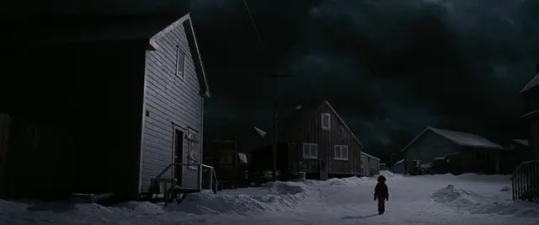
30 DAYS of NIGHT (2007) written by Steve Niles Stuart Beattie Brian Nelson (from the graphic novel by Steve Niles Ben Templesmith) directed by David Slade produced by Sam Raimi Robert Tapert starring Josh Hartnett Melissa George Danny Huston Ben Foster Mark Boone Jr. Amber Sainsbury Megan Franich Manu Bennett cinematography by Jo Willems edited by Art Jones music by Brian Reitzell

f r e a k s (1932) written by Willis Goldbleck Leon Gordon (from the short story "Spurs" by Tod Robbins) directed and produced by Tod Browning starring Wallace Ford Leila Hyams Olga Baclanova Roscoe Ates cinematography by Merritt B. Gerstad edited by Basil Wrangell
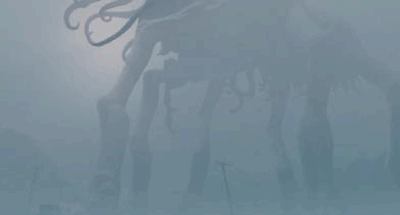
the M i s t (2007) written and directed by Frank Darabont (from the novella by Stephen King) produced by Frank Darabont Martin Shefer Liz Glotzer starring Thomas Jane Laurie Holden Marcia Gay Hardin Andre Braugher Toby Jones William Sadler Frances Sternhagen Jeffrey DeMunn cinematography by Rohn Schmidt edited by Hunter M. Via music by Mark Isham

Invasion of the BODY SNATCHERS (1956) written by Daniel Mainwaring (from the novel by Jack Finney) directed by Don Siegel produced by Walter Wanger starring Kevin McCarthy Dana Wynter Larry Gates King Donovan Carolyn Jones Jean Willes Ralph Dumke cinematography by Ellsworth Fredericks edited by Robert S. Eisen music by Carmen Dragon
3 notes
·
View notes
Text
Thanks @mysticaltorque for the tag! Can’t format like you are cause I’m on mobile and underlining is for some reason AWOL.
What are five songs you’ve been listening to?
Duk Koo Kim by Sun Kil Moon
Sometimes moody early 00s rock hits the spot when I’m trying to get into a groove with writing, and this one does especially well for ones where I’m trying to write that moody drifting late 20s male protagonist who can’t grasp the influence of the grown-ups in his teenage years had on him etc etc. I like this one when I’m trying to write Mathieu in particular. Just vibes, no analysis.
Starshine by LSD and the Search for God
Similar reasons with more of a hypnotic tone to them, and I use it more with Primož.
In Heaven (Lady in the Radiator Song) by David Lynch/Alan Splet
You’re probably noticing the pattern now that I mostly like slower moody songs with slight surrealist elements here and there haha (not clear in the song itself but because of its context in Eraserhead). It’s also got a faint sensual edge to it that’s fun also.
Gently Johnny by The Woodbine and Ivy Band
The Wicker Man’s song for people fucking but if the tone itself was an order of magnitude more horny. Specific genre of song I like is music from horror movies that is horny and/or folk music that is horny. Hope this helps 👍
09-15-00 by Godspeed You! Black Emperor
Incredible dark instrumental post-rock piece by the pros; 09-15-00 refers (albeit incorrectly) to when Ariel Sharon (a Likud—right wing—politician visited Al-Aqsa/the Temple Mount with 1,000 armed police officers, prompting the Second Intifada). The track itself contains no explicit political content and serves to effectively get your hackles up with artistry alone. Really unsettling and good piece with a good build.
I’ll tag @jantratnik and @flourbray on this one next!
6 notes
·
View notes
Text





Alan Splet, David Lynch, Ann Kroeber – Sounds Of A Different Realm CD
RIP David Lynch a voice so unique that you could easily take him for granted. A voice so singular that Lynchian is a word that you immediatly know what it means but have trouble describing it to someone who doesn't.
We are without him now.
So it goes.
Sounds of a different realm is a 3 disc set containing the sound design of Alan Splet and Ann Kroeber in collaboration with David Lynch.
Producer – Ann Kroeber
Recorded By – Alan Splet* (tracks: CD1-1 through CD2-38), Ann Kroeber, David Lynch (tracks: CD1-1 through CD2-38)
Sound Designer – Alan Splet* (tracks: CD1-1 through CD2-38), Ann Kroeber, David Lynch (tracks: CD1-1 through CD2-38)
Download this from my Google Drive HERE
66 notes
·
View notes
Text
First experiment for my multi media art project, Innominate, is here. It’s called Terror Head.
EP/video collages, Rückenfigur, to come this year.
#video by me#music by me#mine#david lynch#david lynch vibes#alan splet#eraserhead#mica levi#ethel cain#ethel cain core#the great dark#the pull#the ring#feel the pull#it’s happening to everybody#ethel cain punish#ethel cain perverts#there are invitations in the dark#ambient#ambience#noise music
2 notes
·
View notes
Text

El hombre elefante (David Lynch, 1980). La segunda película de David Lynch, sigue considerándose, 43 años después de su estreno, una rara avis dentro de su filmografía. Un biopic de época, una historia basada en hechos reales acerca de una de las figuras más legendarias de la era victoriana que aparentemente poco tiene que ver con los ejercicios surreales que el cineasta de Montana ha ido desarrollando desde Cabeza borradora (1976) hasta Twin Peaks The Return (2017). Un trabajo que el propio Lynch admite haber aceptado tras darse cuenta de que si quería introducirse en la industria, su ópera prima, convertida con el paso de los años y gracias a las midnight sessions en objeto de culto, no servía como carta de presentación.
De lo que si sirvió Cabeza borradora fue para llamar la atención del productor ejecutivo de Mel Brooks, Stuart Cornfeld, que tras ver el primer largometraje de David Lynch en su estreno en el cine Nuart de Los Ángeles dijo de ella que “…era lo mejor que le había pasado en la vida. Una experiencia purificadora”. Acto seguido, Cornfeld se puso en contacto con David Lynch y este le propuso un guion en el que llevaba trabajando un tiempo, Ronnie Rocket. Un proyecto en el que el cineasta había puesto todo su empeño -y del que gran parte acabó luego dentro de su regreso a Twin Peaks- y que no consiguieron que ningún estudio aceptara. Lynch, angustiado por la posibilidad de no volver a poder realizar un largometraje, le pidió a Cornfeld que le buscara scripts para que pudiera dirigir. Cornfeld le propuso tres guiones. El primero de ellos era el libreto de El hombre elefante, obra de los guionistas Christopher De Vore y Eric Bergren. En cuanto Lynch escuchó el título, no quiso saber nada de los otros dos proyectos. Ese era el trabajo que quería convertir en su segundo largometraje.
Pero aunque Cornfeld estaba decidido a que Lynch dirigiera la cinta, Mel Brooks prefería al británico Alan Parker. Pero Cornfeld consiguió convencerle para que tuvieran una reunión, y así, Brooks se dio cuenta de que Lynch era el director indicado, además de redefinirle como “El Jimmy Stewart de Marte”. Una vez que Lynch fue contratado, marchó a Londres con un equipo ajeno a la troupé de su artesanal y familiar ópera prima, en el que por ejemplo su director de fotografía Frederick Elmes fue sustituido por Freddie Francis, con el que volvería a trabajar en su segundo y último acercamiento al mainstream, Dune (1984). La única excepción fue su técnico de sonido, Alan Splet, que introdujo el ambiente sonoro industrial de Cabeza borradora en los callejones del Londres victoriano.
Lo mismo ocurrió con el casting de la obra, impuesto por la productora de Mel Brooks y repleta de actores ingleses, entre los que destacaban Anthony Hopkins como el médico Frederick Treves, John Hurt como John Merrick (el hombre elefante), John Gielgud como Carr Gomm o Freddie Jones como Bytes. Este último sería el único actor del reparto que repetiría con el cineasta, en Dune (1984) y Corazón salvaje (1990). Del resto del reparto principal, son conocidas las continuas peleas entre Lynch y Hopkins, ya que este último no confiaba en el director debido a su inexperiencia. Más cordial fue la relación entre Hurt y Lynch, desde el proceso de casting -para el que también se presentó Dustin Hoffman- como en el proceso de rodaje, a pesar de algunos momentos de tensión cuando Lynch pretendió convertir la producción en lo más artesanal posible, realizando él mismo el maquillaje para caracterizar a Hurt en John Merrick. El fracaso en la aplicación del maquillaje por parte del propio cineasta en el rostro y cuerpo de Hurt fue solventado con la entrada del especialista Chris Tucker.
En lo que sí pudo introducir Lynch su sello en las primeras etapas de la producción fue en la reescritura del guion. El libreto original de De Vore y Bergren carecía del drama necesario en el tercer acto del filme, ya que en el mundo real, la vida de John Merrick tras su llegada al hospital donde fue cuidado hasta su fallecimiento, fue un remanso de paz. En cambio, en el guion reescrito por Lynch, este introduce las torturas físicas y psicológicas nocturnas y su regreso al circo de freaks donde fue recogido por el médico Frederick Treves. Pero además de los cambios en el relato, Lynch introduce a una película aparentemente academicista y clásica en su concepción, elementos de su trabajo previo y apuntes de lo que será su filmografía posterior.
En su superficie, El hombre elefante aparenta ser una clásica y conservadora producción de prestigio para la temporada de premios estadounidenses. Un reparto de flema británico, un relato narrado linealmente, un fastuoso diseño de producción que introduce al espectador en la atmósfera de la Inglaterra de finales del XIX y un score de John Morris con reminiscencias -sobre todo en sus primeros acordes- de la suite de El Padrino (Francis Ford Coppola, 1972), compuesta por Nino Rota. No es de extrañar que la cinta fuera una de las candidatas principales en la temporada de premios y fuera nominada a ocho Oscars de la Academia -entre ellos el de mejor película y mejor director- aunque finalmente se fuera de vacío. Pero bajo esa superficie clásica y académica -quizá el trabajo que más ha creado concordia entre público generalista y amantes del cine de Lynch- el segundo largometraje del director esconde apuntes y toques de su particular manera de entender el arte audiovisual.
Solo hay que fijarse en su prólogo y epílogo, nacimiento y muerte de John Merrick. Al principio, a partir de un rostro flotante y superpuesto sobre un cielo estrellado -recurso visual que enlazará a este trabajo con el inicio de Dune– el espectador es testigo de una extraña ensoñación donde el cineasta representa la gestación de Merrick, a partir del relato (entre lo legendario y lo onírico) transmitido por su madre ausente. Una secuencia onírica, que a partir de la concatenación y superposición de los planos trae al recuerdo no solo el inicio de Cabeza borradora -la superficie de un planeta alienígena que no es más que el exterior de la mente de Henry Spencer, el protagonista de la misma- sino una perversa sugerencia, entre la concepción y la violación por parte de los elefantes a la madre de Merrick. Esto también recuerda a la recreación de la violación y muerte de Laura Palmer en la secuencia que da cierre al primer episodio de la segunda temporada de Twin Peaks, donde la recreación de la última noche de Laura Palmer -a partir de los recuerdos de Ronette Pulaski- es representado a partir de una puesta en escena que comparte estética y tono con el arranque de El hombre elefante. De idéntica manera, a lo largo de todo el metraje del filme, el rostro de la madre de Merrick acompaña tanto al protagonista de la cinta como al espectador, a partir de un retrato que atesora Merrick y que es registrado por la mirada del cineasta, con la misma liturgia que el retrato de reina del baile de Laura Palmer en Twin Peaks. Dos presencias, ambas de personajes fallecidos, que inundan y ahogan tanto la narración como los márgenes del celuloide.
De idéntica manera, la conclusión de la cinta, con el rostro de la madre de Merrick adscrita a un orbe flotante bajo el cielo nocturno del espacio, esperando a su hijo en la inmensidad de la eternidad, sirve como antecedente directo de dos momentos cruciales de Twin Peaks. En primer lugar, la muerte de Merrick, tan plácida como buscada por el propio Merrick para acabar con su sufrimiento, sirve de precedente al clímax de Twin Peaks: Fuego camina conmigo (1992), donde Laura se deja matar por su propio padre para conseguir algo de paz. Tanto Merrick como Laura son testigos, en sus últimos estertores, de una epifanía entre lo cósmico y lo religioso. Para rizar el rizo entre dos obras tan aparentemente opuestas, Merrick y el espectador ven el rostro de su madre observándole con ternura y delicadeza desde el interior de un orbe cósmico. Un orbe que en Twin Peaks The Return se convierte en elemento narrativo y conceptual de la obra, al introducir Lynch en el interior del mismo el retrato de Laura Palmer visto en las iteraciones precedentes del serial.
Otro elemento que Lynch introduce por primera vez en su obra es el del conflicto entre dos mundos. Una escisión que tan bien define el conjunto de la obra de Lynch la famosa frase de Paul Eluard: “Hay otros mundos, pero están en este”. Si en su ópera prima lo real se transformaba en una pesadilla de tintes surreales y kafkianos, monotonal en su desarrollo y ambientación, en El hombre elefante se divide entre los sórdidos ambientes de clase baja surgidos de la segunda revolución industrial y el mundo elevado de las clases aristocráticas de la Inglaterra victoriana. Ambos mundos surgidos de un ecosistema de humo, metal y fábricas que conformaron -como la bomba atómica que da origen al universo Twin Peaks- dos dimensiones que conviven sin rozarse en el Londres victoriano: las clases marginales de Whitechapel y la periferia londinense -lugar de ese circo subterráneo freak, heredero de la representación de Tod Browning en La parada de los monstruos (1932) del que surge John Merrick- y el mundo aristocrático al que pertenece Frederick Treves, donde la conversación, el arte y los rituales sociales son el centro de la existencia. No es casual que el incidente incitador de la trama sea ese choque entre dos mundos: el descubrimiento de Frederick Treves de El hombre elefante, en una secuencia que trae al recuerdo la primera aparición de Boris Karloff en el Frankenstein (1931) de James Whale.
Una secuencia cuya puesta en escena -Frederick Treves introduciéndose en el inframundo de las clases populares- se erige como precursora de la odisea del agente Cooper en el capítulo final del Twin Peaks original. Un laberinto de límites y geografía espacio-temporal imprecisa, que luego será desarrollada en mayor profundidad tanto en las siguientes evoluciones y revoluciones de Twin Peaks, como en otros trabajos emblemáticos del cineasta. A destacar: el descubrimiento del tenebroso y seductor otro lado del aparentemente luminoso Lumberton por parte de Jeffrey Beaumont desde la intimidad del armario del apartamento de Dorothy Valence en Terciopelo azul (1986) o la pérdida de conciencia temporal y espacial de Fred Madison en esa vivienda de cortinas rojas infinitas que sirven de trasunto de su mente escindida y fracturada, fortaleza de sus más sucios secretos, en Carretera perdida (1996).
Pero también El hombre elefante con la que un cineasta alternativo como Lynch se introdujo en el circuito del cine de estudios, sirve al artista multidisciplinar para aprender y desarrollar su peculiar talento a partir de las formas y códigos del cine clásico. Porque El hombre elefante hunde sus raíces no solo en el cine melodramático clásico -Douglas Sirk mediante- con el que Lynch comienza su estudio milimétrico del dolor del alma a partir de los rostros en primer plano de John Merrick y aquellos que observan su monstruosidad física y belleza interna -una mirada agónica que llevará a su paroxismo en el episodio piloto de Twin Peaks o en el epílogo de Mulholland Drive (2001) – sino sobre todo en las maneras del cine mudo. Fundidos a negro entre secuencia y secuencia -e incluso entre plano y plano- que aportan una cualidad etérea y onírica a la realidad de lo narrado. Elementos todos ellos que servirán para profundizar e indagar en los límites entre independencia y sistema de estudios -de nuevo dos mundos en conflicto- que se encuentran sobre todo entre Terciopelo azul y Mulholland Drive hasta su vuelta a sus raíces más experimentales con Inland Empire (2006) y Twin Peaks The Return.
Unas raíces experimentales salidas de sus primeros cortometrajes y Cabeza borradora, cuya impronta permanece subrepticiamente en el interior de El hombre elefante. En primer lugar, a partir de la atmósfera sonora creada por Alan Splet, que inunda -sutilmente y por encima del sonido ambiente y los diálogos de la cinta y el score de John Morris- la aparentemente sin subterfugios puesta en escena directa y teatral del conjunto de la obra. A su vez, el terror industrial surgido en el cineasta tras pasar de vivir en la “idílica” Misoula -su Lumberton o Twin Peaks particular- a la tenebrosa e industrial Philadelphia en su juventud, un terror que hizo acto de presencia para quedarse en su ópera prima -casi un personaje más de la obra- continúa en El hombre elefante, como si esta cinta fuera un apéndice de la pesadilla de Henry Spencer, o una nueva reinterpretación de su delirio, momentos antes de morir. Todo ello potenciado por un uso del blanco y negro -al igual que en la película protagonizada por Jack Nance- con una intencionalidad alejada de lo retro y profundamente estilística y atmosférica, precursora de su trabajo como fotógrafo. Una obra que siempre se ha considerado como una curiosidad, una obra extraña dentro del conjunto de la obra de Lynch, pero que analizada y observada con perspectiva demuestra que junto a Cabeza borradora sirvió de campo de pruebas, punta de lanza y díptico, para construir al David Lynch que vino después.
Por Felipe Rodríguez Torres para Revista Mutaciones ➡️ n9.cl/5xglw 🎥🎞️❤️
0 notes
Text
Review "The Elephant Man"

I watched "The Elephant Man" directed by David Lynch. The actors are excellemt. John Hurt plays John Merrick, the Elephant Man. The makeup took 7 hours to put on. Anthony Hopkins plays the role of Dr. Frederick Treves. Many other amazing actors worked on the film, including Sir John Gielgud, Anne Bancroft, Wendy Hiller, Freddie Jones and many others. Freddie Francis was the Director of Photography. The film was in b&w and was excellently shot. It really is lovely. I quite enjoyed this film and have seen it in the past numerous times. I suppose the only qualm I had with the film was a scene where a dream scene occurs and the strange factory sounds and visuals that are very representative of David Lynch is put in and I'm not sure if this is simply a signature or not for I wonder if it is a totally necessary scene. Some of the Lynch associated sounds occur in several other scenes in the film. However Alan Splet was a sound designer for this film and also worked on sound for David Lynch on Blue Velvet, Dune and Eraserhead so he might have had something to do with that sound.
This is the Blu-Release from Criterion and has a lot of interesting supplement material/interviews and I'm still going through that.
In the classic film list, They Shoot Pictures Don't They, it is at number 364. It also in in classic films lists from The New York Times, Empire and Mark Kermode.
Although the film is supposed to be close to the actual life of John Merrick there are a number of inaccuracies that don't entirely match up with reality, or so it seems.
1 note
·
View note
Text
1 note
·
View note